The ellipse and line of dots on Piedra 6 can provide a calendar for a month or six weeks either side of the solstice, as the photographs below demonstrate. The vertical movement of the shadow is just about three millimetres per day, but the width of the shadow, as measured by the line of dots, offers much greater sensitivity.
It may be relevant that the line of dots ceases to be a useful marker from around 13th June, but would be most effective in the week or two before that. The heliacal rise of the Pleiades is sometimes put at 3rd June, with a flat horizon. Its visibility from the stones of Cochineros is limited because of the high hills to the East, but this calendar stone would be useful to time a pilgrimage to Paria Caca or another high point to view the rising of the Pleiades, as is still done today at the Quoyllur Rit’i festival near Cusco.

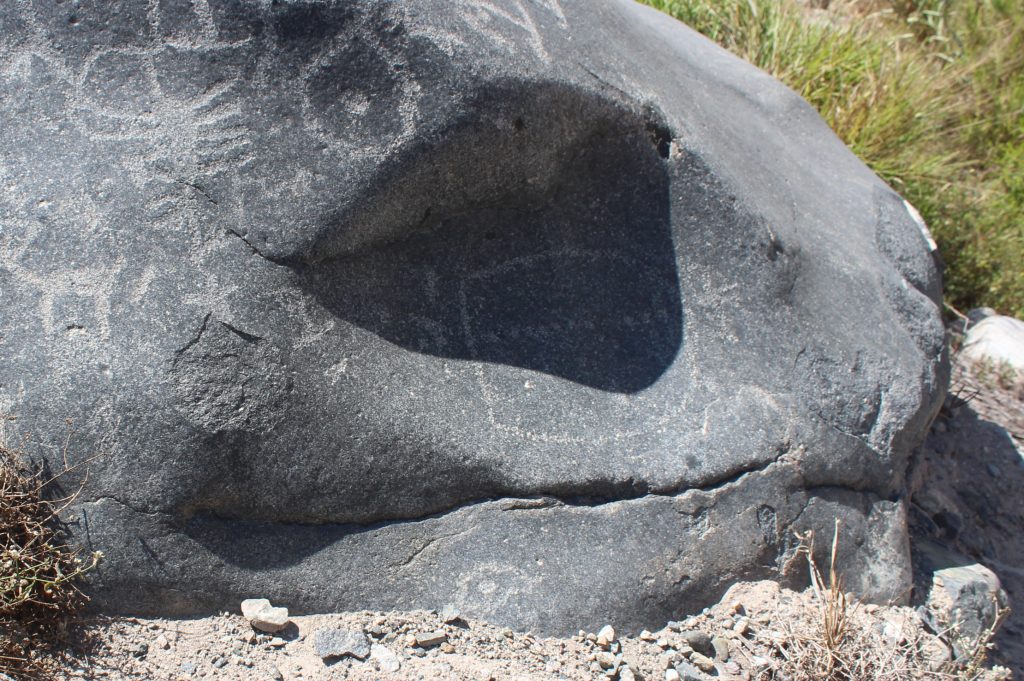
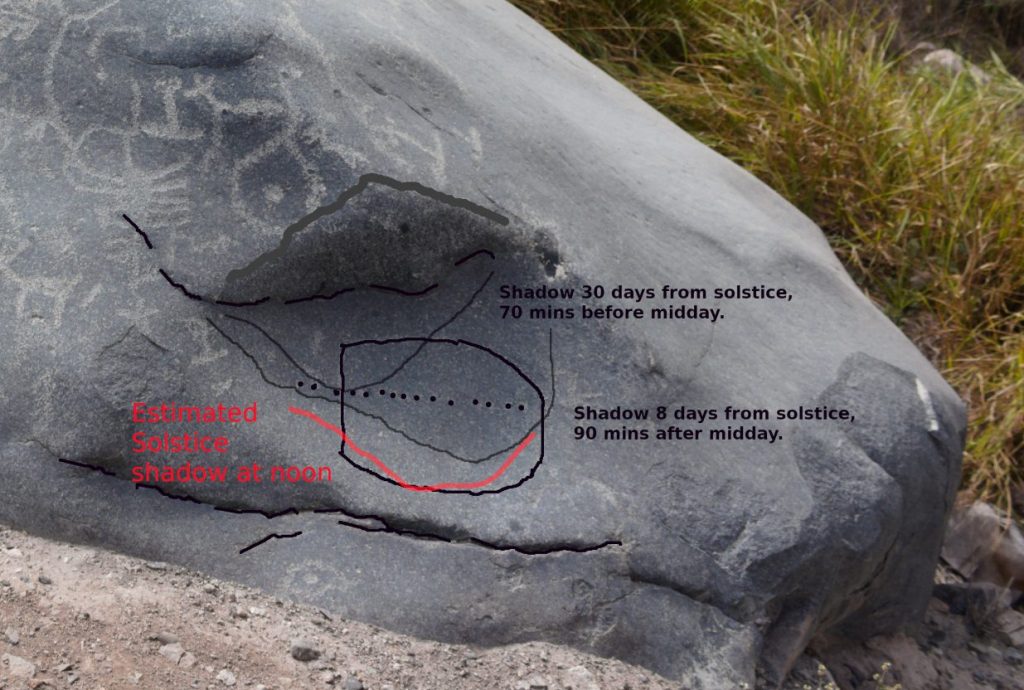
There are other shadows cast on the rock panels at the site, but unless they are on a panel oriented east to west they do not make effective seasonal markers. There is one other potential calendar marker, located high up on a barely accessible panel of the southernmost Piedra 12.
It is difficult to see the markings because the river has eroded the terracing to the west of the stone, so that there is now a sheer drop of three or four metres to the river channel. However the markings done all over these panels suggest it was once more easily accessible.
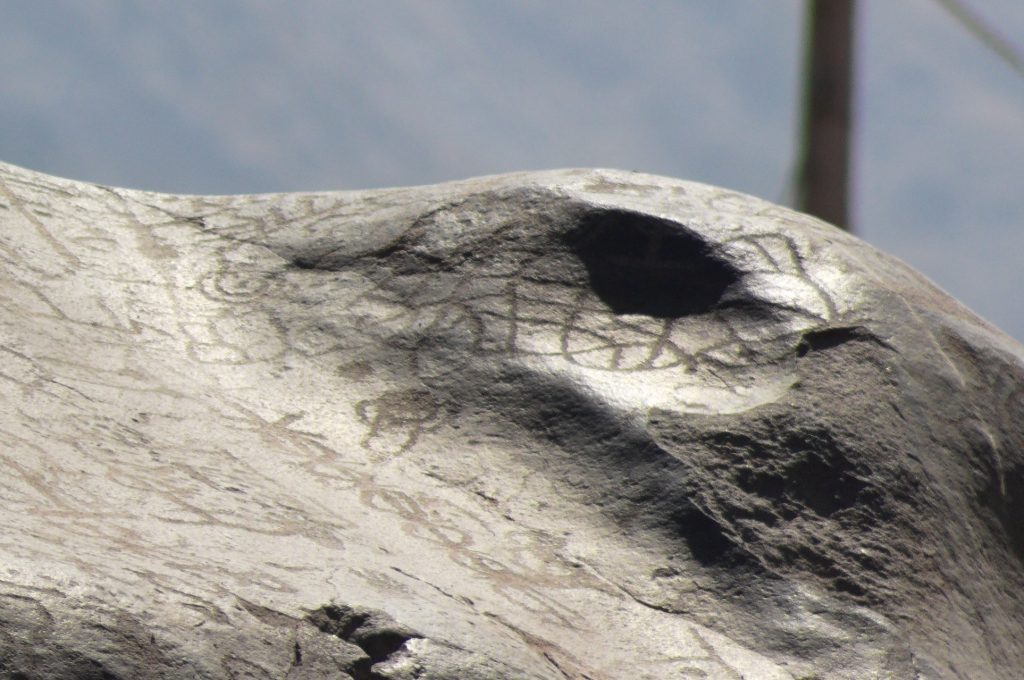
As can be seen above the shadow is centrally positioned around noon eight days after the solstice. As the panel is oriented east west, it will move from left to right during the day, and move downwards as the solstice approaches or recedes.
So the shadow’s position on the grid would provide a useful calendar guide for a week or two either side of the solstice.

The figure above shows the shadow position at 29 June on the stone grid based on Jimenez’ drawing of the markings on the stone. Within the shadow is a round-handled tumi, a recent addition which stands out bright white.
It would be interesting to see how the shadow varies closer to solstice, to see what dates are indicated by the two horizontal lines below.
A third potential calendar marker is seen on Piedra 4.
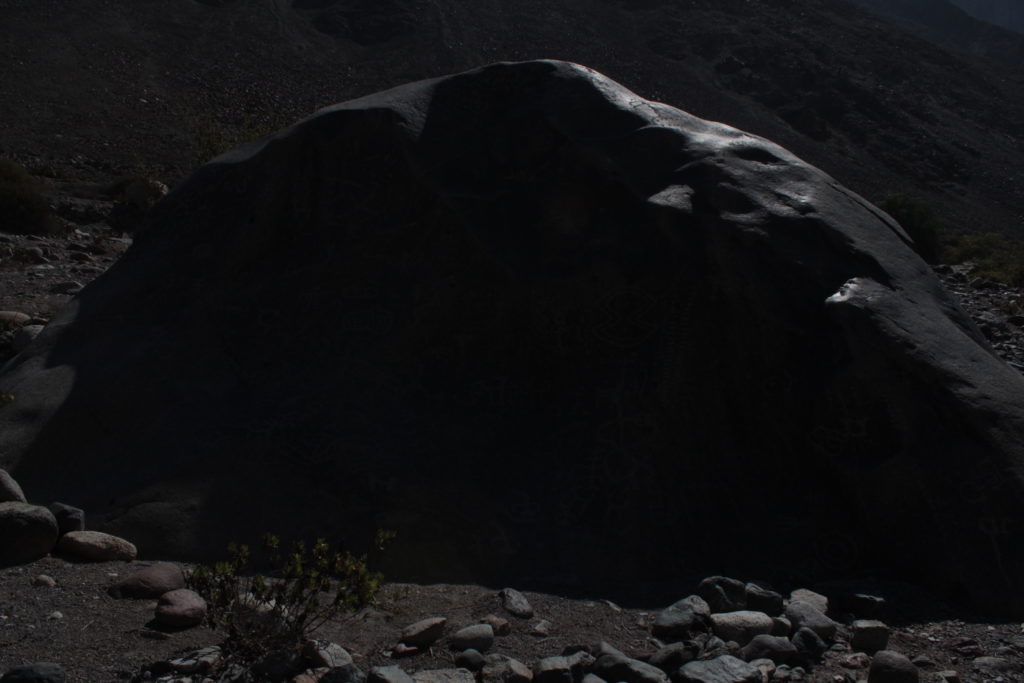
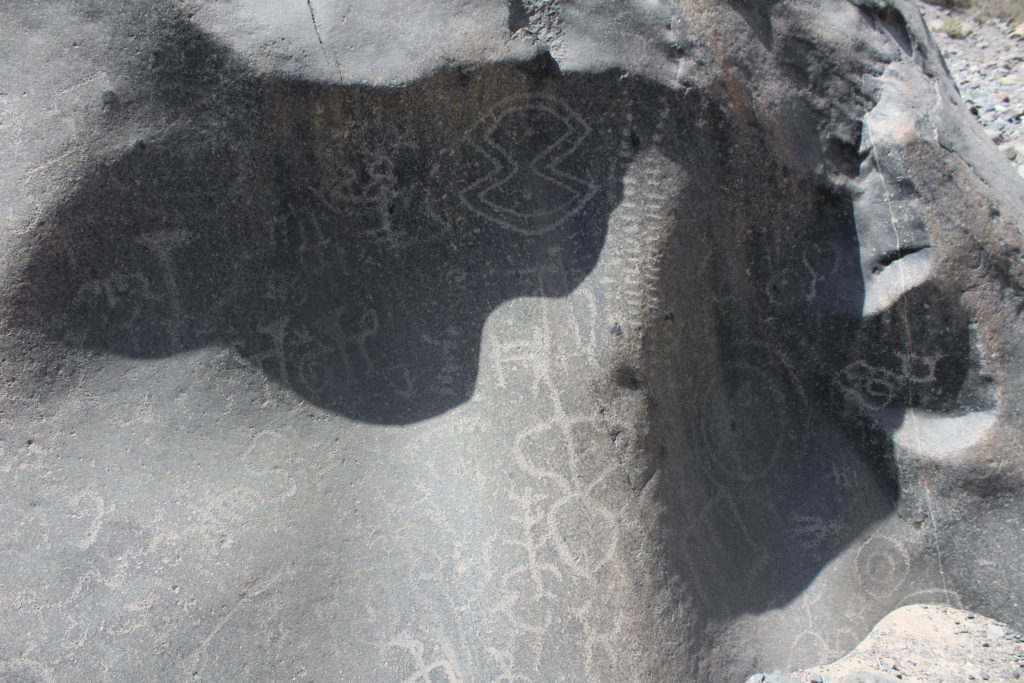

Macholdt, Dorothea & Jochum, Klaus & Pöhlker, C. & Arangio, Andrea & Förster, Jan-David & Stoll, B. & Weis, Ulrike & Weber, Bettina & Müller, M. & Kappl, Michael & Shiraiwa, Manabu & Kilcoyne, David & Weigand, M. & Scholz, D. & Haug, G.H. & Al-Amri, A. & Andreae, Meinrat. (2017). Characterization and differentiation of rock varnish types from different environments by microanalytical techniques. Chemical Geology. 459. 10.1016/j.chemgeo.2017.04.009.
Geochemical studies on rock varnish and petroglyphs in the Owens and Rose Valleys, California
- Meinrat O. Andreae, Abdullah Al-Amri, Tracey W. Andreae, Alan Garfinkel, Gerald Haug, Klaus Peter Jochum, Brigitte Stoll, Ulrike Weis
TY – JOUR
AU – Liu, Tanzhuo
AU – Broecker, Wallace
PY – 2000/02/01
SP –
T1 – How fast does rock varnish grow?
VL – 28
DO – 10.1130/0091-7613(2000)28<183:HFDRVG>2.0.CO;2
JO – Geology
ER –
Method
Fiji, sampling,
Siete cartas ineditas del Archivo Romano de
la Compafiia de Jesds (161 1-1613):
huacas, mitos y ritos andinos p 213 – 214
Mario Polia*
